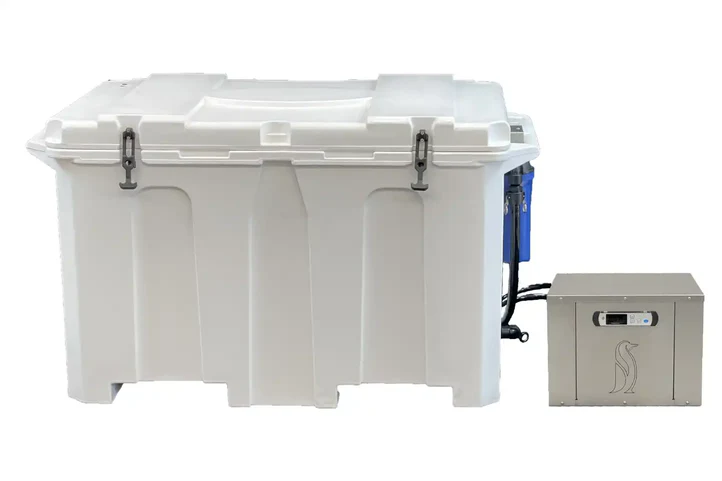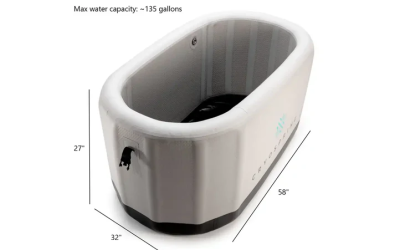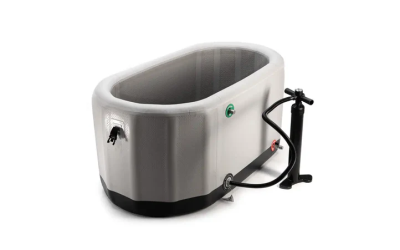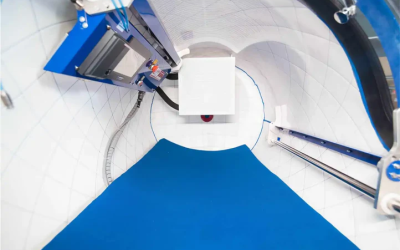Purpose of cold plunges
The purpose of a cold plunge is to immerse your body in cold water for a short period, typically around 10 minutes, as a form of therapy. This practice has existed for centuries, with proponents claiming various benefits for the mind and body.
One significant advantage of cold plunges is their ability to aid muscle recovery. When exposed to the cold, muscles help reduce inflammation and soreness, allowing them to heal faster. That’s why cold plunge after workout or physical activity can be especially beneficial.
Another benefit of cold plunges is their potential to reduce joint pain. The cold water can help to decrease swelling and alleviate discomfort in the joints, providing relief for those suffering from arthritis or other similar conditions.
Cold immersion has also been shown to increase insulin sensitivity. This means your body becomes more efficient at using insulin to regulate blood sugar levels. This can be particularly important for individuals with diabetes or those at risk of developing the condition.
Furthermore, cold plunges have been known to boost mood and improve overall well-being. The cold water stimulates the release of endorphins, which are feel-good hormones that can enhance your mood and promote a sense of relaxation and stress relief.
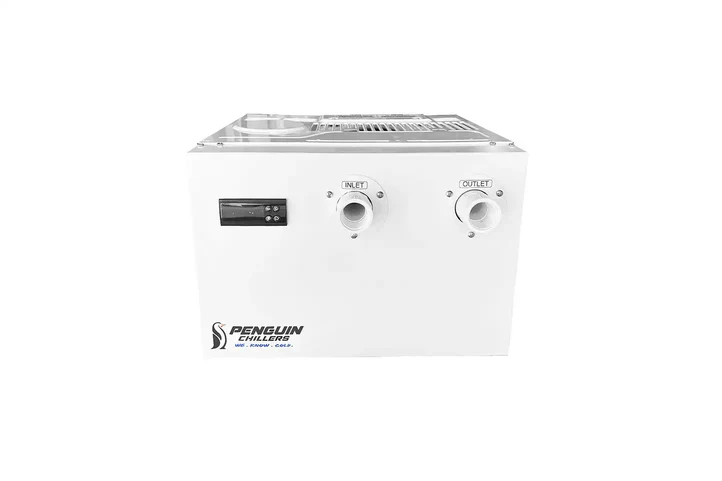
The Importance of Water Temperature in Cold Plunges
- Optimal Healing Potential: When it comes to temperature, water temperature is vital in maximizing the healing potential. People often seek the therapeutic benefits of cold plunges, such as reduced inflammation, increased circulation, and improved muscle recovery. The magic lies in finding the sweet spot temperature range that allows your body to reap these benefits without shock. It’s like Goldilocks finding the perfect porridge—not too hot or cold, but just right!
- Gentle Awakening for the Mind: Cold plunges have gained popularity for their ability to invigorate the mind and boost mental clarity. The cold plunge temperature plays a key role in this revitalizing experience. People often describe the sensation of stepping into a cold plunge as an instant mental wake-up call. The cold water stimulates the body’s natural response, increasing the release of endorphins, the feel-good hormones. This enjoyable jolt of energy can kickstart your day, leaving you feeling alert and ready to conquer your daily challenges.
- Personal Comfort and Individual Preference: Just as we all have our favorite ice cream flavors or coffee temperatures, the ideal water temperature in a cold plunge varies from person to person. Some people may prefer a milder temperature, while others crave the exhilaration of a cooler dip. It’s important to listen to your body and find the water temperature that provides you with the most enjoyable experience. Remember, at the end of the day, it’s all about finding comfort and indulging in a cold plunge that suits you perfectly.
Impact on physiological responses
When you immerse yourself in a cold plunge, your body reacts incredibly. The cold temperature causes your blood vessels to constrict, which helps reduce inflammation and swelling. This response also aids in numbing any pain you may be experiencing, providing much-needed relief.
Additionally, cold plunge therapy stimulates your body’s circulation. As blood vessels constrict and dilate, blood flow increases, delivering vital nutrients and oxygen to your muscles and tissues. This enhanced circulation promotes faster healing and helps remove waste products from your body.
Furthermore, the cold plunge temp activates your body’s natural defense mechanisms. Your immune system is given a boost, resulting in improved overall health. Cold plunge therapy can enhance mental well-being by releasing endorphins and reducing stress.
Factors Influencing Cold Plunge Temperatures
When it comes to cold plunging, understanding the factors that influence the temperature of the water is key to maximizing the benefits of this invigorating practice. Whether you’re a seasoned cold plunger or a newcomer to the trend, keeping these factors in mind will help you achieve the ideal temperature for your refreshing plunge.
- Ambient Temperature: The temperature of your surroundings plays a significant role in determining the cold plunge experience. The ambient temperature naturally increases on hot summer days, resulting in warmer water. Conversely, the ambient temperature will make the water colder during chilly weather. Be mindful of this factor to adjust your plunge accordingly and make the most of your cooling immersion.
- Source Water Temperature: The initial temperature of the water itself is another crucial factor to consider. Depending on where you source your water, it can have temperature variations. Natural water bodies, such as lakes or rivers, tend to be colder than tap water that flows through pipes, which warmer underground temperatures might influence. Keeping an eye on the source water temperature will help you control the overall coldness of your plunge.
- Duration and Circulation: If you find the water in your plunge getting warmer quicker than expected, consider the duration of your plunge and the water’s circulation. Prolonged immersion and limited water circulation can cause warmth to seep into the plunge, gradually raising the temperature. Adhere to recommended plunge times and occasionally stir the water to maintain the desired chill.
- Additional Cooling Elements: Additional cooling elements can provide an extra icy kick to your cold plunge. This can include adding ice cubes, using chilled towels, or setting up your plunge in the shade to avoid direct sunlight. These simple but effective methods can help you achieve that ultimate refreshing cold plunge experience.
By understanding and considering these various factors influencing cold plunge temperatures, you can fine-tune your plunge and ensure a refreshing experience every time. Remember, finding the perfect balance of coldness for your preference is the key to reap this popular wellness practice’s physical and mental benefits.
Individual tolerance levels
One crucial factor is age. As we grow older, our bodies become less resilient, and our ability to tolerate extreme temperatures diminishes. Unsurprisingly, seasoned individuals may find it more challenging to withstand the icy embrace of a cold plunge.
Another significant determinant is body composition. Your body’s muscle-to-fat ratio influences your ability to regulate internal temperatures. Individuals with a higher percentage of body fat tend to withstand the cold better since adipose tissue acts as a natural insulator. However, those with lean physiques might feel the cold more intensely.
Previous cold exposure also plays a role. Regular exposure to freezing temperatures trains your body to adapt and better tolerate the cold. People with prior experiences with cold water plunging or exposed to cold climates are likelier to handle the icy conditions with composure, like a seasoned pro.
Additionally, overall health and fitness levels impact cold tolerance. Physically fit people are better equipped to withstand the cold due to improved circulation and cardiovascular health. Conversely, certain health conditions or medications can diminish cold tolerance.
Variations based on personal preferences and experiences
Cold plunges offer a range of temperature options, allowing you to explore variations and find what works best for you. Traditional cold plunges generally fall within the range of 5°C to 10°C. This chilly but refreshing temperature range provides a quick and intense cool-down for those seeking a refreshing experience.
For those who prefer a milder approach, temperatures ranging from 12°C to 16°C can be more suitable. This range offers a gentler cold plunge experience, providing a sense of rejuvenation without overwhelming your system.
Cool plunges may be ideal if you need more time to plunge into the icy depths. Ranging from 18°C to 22°C, these cooler temperatures still offer a refreshing experience, perfect for those who enjoy a more moderate dip.
How acclimatization plays a role in cold immersion
Acclimatization, in the context of cold immersion, refers to the gradual adaptation of your body to freezing temperatures. When you regularly expose yourself to cold water, your body undergoes physiological changes to better tolerate the cold. These changes include increased vasoconstriction, improved circulation, and heightened thermogenesis (heat production within the body). Repeated exposure over time makes your body more efficient at conserving heat, thus enhancing your ability to withstand colder temperatures with less discomfort.
Acclimatization only happens after some time. It requires patience and consistency. Start by gradually reducing the temperature of your water immersion. Begin with lukewarm water and gradually decrease the temperature over several sessions. This allows your body to adapt and adjust without going into shock. As you progress, you can increase the duration and intensity of your cold plunges.
Acclimatization not only improves your ability to tolerate the cold, but it also offers a range of health benefits. Cold plunging has been linked to reduced inflammation, improved circulation, enhanced immune response, and increased alertness. By acclimatizing your body, you can optimize these potential benefits and reap the rewards of this invigorating practice.
Optimal temperatures for maximizing benefits
The recommended temperature range for cold plunge therapy is between 50°F and 60°F. This range has been found to elicit the desired results without harming the body. Maintaining this safe temperature range is important to avoid any potential risks.
Personalizing the temperature based on your individual preference and specific goals can further enhance the benefits of cold plunge therapy. Some people prefer a slightly colder temperature to invigorate their senses and boost circulation. In comparison, others may opt for a somewhat warmer temperature to ease muscle tension and promote relaxation.
When customizing your cold plunge temperature, listening to your body and paying attention to any discomfort or reactions is essential. You can make the most of your cold plunge therapy session by finding the right balance and staying within the recommended range.

